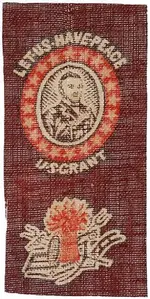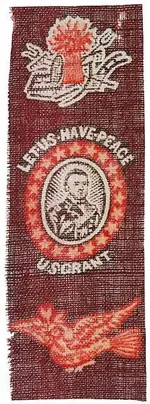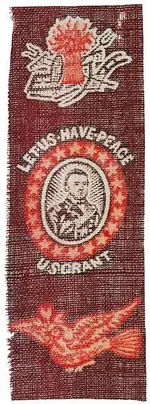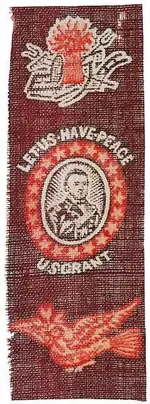Re: Help with mid 1800's farm house Pendant or Pin
I'm sure that many of you have done your own research regarding Grange/H-of-P. Thus, my so called mini-history is primarily for those of you who are curious, but just don't have the time.
Hopefully the following snippets will shed some light on the question of why early day Grange organizations were involved with symbolism and secrecy.
1. Grange Definition/Origin:
Middle English (in the sense 'granary, barn'): from Old French, from medieval Latin granica (villa) 'grain house or farm', based on Latin granum 'grain'
2. The Granger Movement was begun in the late 1860s by farmers who called for government regulation of railroads and other industries whose prices and practices, they claimed, were monopolistic and unfair. Their efforts contributed to a growing public sentiment against monopolies, which culminated in the passage of the Sherman Act (or Sherman Anti-Trust Act) of 1890, 15 U.S.C.A. §§ 1–7. In 1867, the American farmer was in desperate straits. Needing better educational opportunities and protection from exorbitant prices charged by middlemen. So the farmers decided to form an independent group to achieve their goals.
3. Definitions of a couple of key words used above and below:
A. Monopolistic = Monopoly
B. Hoodwinked = To cover the eyes with a hood or blindfold. To deceive or trick.
4. Rituals and Ceremonies:
When the Grange first began in 1867, it borrowed some of its rituals and symbols from Freemasonry, including secret meetings, oaths and special passwords. Small, ceremonial farm tools are often displayed at Grange meetings. Elected officers are in charge of opening and closing each meeting. There are seven degrees of Grange membership; the ceremony of each degree relates to the seasons and various symbols and principles. During the last few decades, the Grange has moved towards public meetings and no longer meets in secret. Though the secret meetings do not occur, the Grange still acknowledges its rich history and practices some traditions.
5. Related:
Known as "the Farmer's Masonry," the order uses a seven-degree ritual system, with signs, passwords, grips, and regalia. Both men and women are admitted, 14 years of age or older as equal members, since Kelley was persuaded by his niece, Caroline Hall, to admit women into the order when it was first founded. The first lodge was Fredonia Grange No. 1 in Fredonia, NY. It was instrumental in passing the "Granger Laws" which put an end to various abuses by the railroad industry in the late 1800’s. The order uses the Holy Bible in its ritual, which is placed on an altar in The Grange, and 43 passages from the Holy Bible are quoted in the Subordinate Grange's four degrees. The Grange Master administers vows to the candidates in each of the four degrees, and the candidate is hoodwinked in the first degree, showing Masonic influences.
Link for advanced research involving various aspects, including levels of ritual "degrees."
http://www.phoenixmasonry.org/masonicmuseum/fraternalism/grange.htm
[ Assortment of Grange Emblems/Tools/Books ]








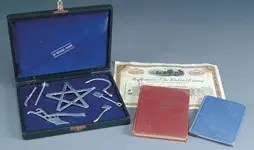


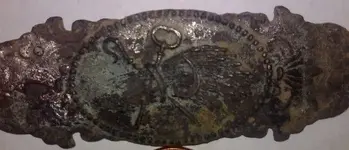

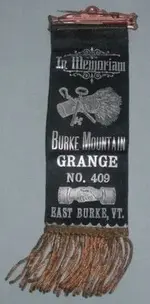
 I'm throwing my same hat into the ring, and sticking with my original thought: 'coffin' tag, of which we now feel strongly was related to a Grange member. As TexasTee said, it could have gone inside the coffin or attached to some type of memorial plaque. I think it was attached with the 4 holes, and the bar on the back held some type of ribbon. I've enjoyed this discussion! Breezie
I'm throwing my same hat into the ring, and sticking with my original thought: 'coffin' tag, of which we now feel strongly was related to a Grange member. As TexasTee said, it could have gone inside the coffin or attached to some type of memorial plaque. I think it was attached with the 4 holes, and the bar on the back held some type of ribbon. I've enjoyed this discussion! Breezie